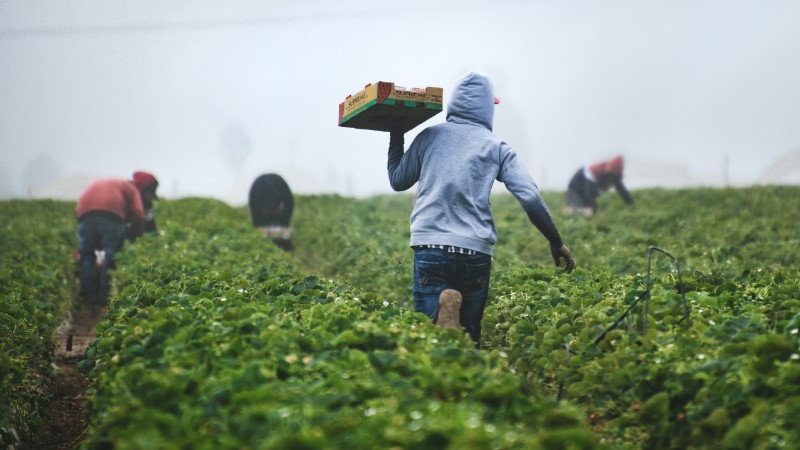How To Learn From Other Farmers And Connect With The Agricultural Community?

Learning from other farmers and connecting with the agricultural community can be a valuable way to grow both personally and professionally in the industry. Whether you are a seasoned farmer or just starting out, tapping into the knowledge and experiences of others can provide insights and inspiration that can help you make informed decisions, overcome challenges and advance your career.
In today’s rapidly changing agriculture landscape, connecting with like-minded individuals and experts in the field is more important than ever. By establishing meaningful relationships with other farmers, attending industry events, and participating in online forums and communities, you can expand your network, gain new perspectives and stay up-to-date on the latest trends and innovations in agriculture.
Whether you’re looking to improve your farming practices, connect with potential customers or exchange ideas with peers, the agricultural community is a rich resource that offers limitless opportunities for growth and learning.
How to connect with the farmers’ community?
There are several ways to connect with the farming community and gain valuable insights and knowledge from other farmers. One way to connect is through attending farming conferences, trade shows, and workshops. These events provide a platform for farmers to network, learn about new technologies, and hear from industry experts. They are also a great opportunity to meet other farmers, discuss challenges, share ideas and experiences, and form new connections.
Online communities and forums can also be great resources for connecting with other farmers. There are various online platforms, such as social media groups, discussion boards, and agricultural forums, where farmers can share their experiences, ask questions, and participate in discussions. These online communities can be a great source of information, support, and connection for farmers, no matter where they are located.
Another way to connect with the farming community is by reaching out to local farmer organizations, co-ops, and extension offices. These organizations are often staffed by experienced professionals who can provide farmers with information, support, and resources. They may also host events and workshops where farmers can connect, learn and network with others in the community.
Additionally, participating in local farm tours and demonstrations can provide an opportunity to see firsthand how other farmers are running their operations and to ask questions and learn from their experiences.
Benefits of community farming
Community farming offers numerous benefits to farmers, both individually and collectively. Farmers can pool resources, share knowledge and expertise, and collaborate to achieve common goals by working together. Some of the key benefits of community farming include the following:
- Improved access to resources: By working together, community farmers can access a wider range of resources, such as equipment, land, and financing, that might not be available to them individually.
- Increased efficiency: Community farming allows farmers to pool their resources and expertise, leading to more efficient and cost-effective operations. For example, by sharing equipment and labor, farmers can reduce costs and improve output.
- Reduced risk: Community farming allows farmers to share the risk involved in farming operations. By pooling their resources and spreading the risk across multiple farmers, the impact of any one farmer’s loss is reduced.
- Improved knowledge sharing: Community farming allows farmers to share their knowledge and expertise with others. This can lead to increased innovation, better practices, and improved overall performance.
- Increased sense of community: Community farming can provide a sense of community and support for farmers. By working together, farmers can build relationships and form a support network to help them navigate the challenges of farming and achieve their goals.
Shared use of land
Shared use of land can be a key benefit of community farming. In some cases, farmers may not have the resources to secure and maintain their own land. Still, they can gain access to additional land and resources by participating in a community farming operation. This can be especially beneficial for smaller or beginning farmers who may not have the financial means to purchase or lease their own land.
In a community farming arrangement, a group of farmers can pool their resources and collectively lease or purchase land for their operations. This shared ownership and land use can provide benefits such as improved access to land and resources, reduced costs, and increased efficiency. The shared land can also provide opportunities for collaboration and knowledge sharing among farmers, leading to improved practices, increased innovation, and enhanced overall performance.
Shared land use in community farming can also benefit the wider community, such as preserving open space, promoting local agriculture, and supporting sustainable land use practices. By pooling their resources and working together, community farmers can help ensure local agriculture’s continued viability and contribute to rural communities development.
Collaborative marketing and sales strategies
Collaborative marketing and sales strategies can be an important aspect of community farming. By working together, community farmers can pool their resources and develop more effective marketing and sales strategies, increasing their ability to reach new customers and build a loyal customer base. This can be especially beneficial for small and beginning farmers who may not have the resources to invest in marketing and sales efforts on their own.
Farmers can collaborate on various marketing and sales initiatives in a community farming arrangement, such as joint promotions, shared advertising campaigns, and cooperative marketing efforts. For example, a group of community farmers might work together to develop a shared brand or logo that represents their group and helps to build recognition and awareness among consumers. They might also work together to create marketing materials and develop joint promotions and events to attract customers and build their brand.
In addition to providing benefits for farmers, collaborative marketing and sales strategies can also benefit consumers by providing them with access to a wider range of locally grown products and supporting the development of local food systems. By working together, community farmers can help promote local agriculture’s benefits and support the growth of sustainable food systems that benefit both farmers and consumers.
Cooperative purchasing
Cooperative purchasing is a strategy in which community farmers pool their resources and negotiate bulk purchasing discounts on inputs such as seeds, fertilizer, and other supplies. By purchasing inputs in bulk, community farmers can reduce the cost of these inputs and increase their overall profitability.
In a cooperative purchasing arrangement, community farmers can negotiate discounts and volume-based pricing from suppliers, taking advantage of the economies of scale that come with bulk purchasing. For example, a group of community farmers might work together to purchase seeds, fertilizer, and other inputs in bulk, leveraging the group’s purchasing power to negotiate better prices.
In addition to reducing the cost of inputs, cooperative purchasing can also help improve the bargaining power of small and beginning farmers, who may have limited purchasing power. By working together, community farmers can level the playing field and negotiate better prices, which can help improve the group’s overall financial stability and support the growth of sustainable agriculture in their community.
Joint venture opportunities
Joint venture opportunities are business arrangements in which community farmers work together to own and operate a farming venture jointly. Joint ventures can take many forms, including partnerships, limited liability companies, and corporations, and can provide various benefits to participating farmers.
One of the key benefits of joint venture opportunities is the ability to pool resources and expertise. By working together, community farmers can leverage their combined resources, including land, capital, and expertise, to tackle larger and more complex farming ventures that might not be feasible. For example, a group of community farmers might come together to start a cooperative farm, sharing the costs and risks of starting and operating the venture while also sharing in the profits.
Joint ventures can also provide farmers with access to new markets and customers. Community farmers can pool their resources by working together to develop new marketing and sales strategies that reach a wider audience and generate increased revenue. Additionally, joint ventures can provide a sense of community and support for participating farmers, who can work together to tackle the challenges of farming and achieve their goals.
Environmental benefits
Community farming can provide a number of environmental benefits by promoting sustainable agriculture practices and preserving natural resources. By working together, community farmers can pool their resources and expertise to implement environmentally-friendly farming methods that are both better for the environment and more economically sustainable in the long term.
For example, community farmers can collaborate on conservation efforts such as protecting wetlands, planting cover crops, and implementing no-till farming methods. These efforts can help reduce soil erosion, improve soil health, and conserve water resources. Community farmers can also work together to adopt more sustainable methods of pest control, such as the use of beneficial insects, to reduce the use of harmful chemicals.
In addition, community farmers can collaborate on developing renewable energy systems, such as wind or solar power, on reducing their reliance on fossil fuels and their carbon footprint. By pooling their resources and expertise, community farmers can implement sustainable farming practices that benefit the environment and improve the bottom line.
Community development
Community farming can positively impact the communities in which they are located by promoting economic development, creating jobs, and supporting local businesses. By working together, community farmers can tap into new markets and reach a wider customer base, which can increase their income and help them to grow their operations.
For example, community farmers can collaborate on marketing and sales strategies to sell their products directly to consumers through farmers’ markets, community-supported agriculture programs, and online sales platforms. This not only helps farmers reach a wider customer base but also helps to build strong relationships between farmers and the local community. Additionally, community farming can help to create local jobs and stimulate the local economy by supporting small businesses that provide goods and services to farmers.
By promoting economic development and supporting local businesses, community farming can help build thriving, sustainable communities well-positioned for long-term growth and prosperity. Through collaboration and cooperation, community farmers can help to create a better future for themselves, their families, and their communities.

